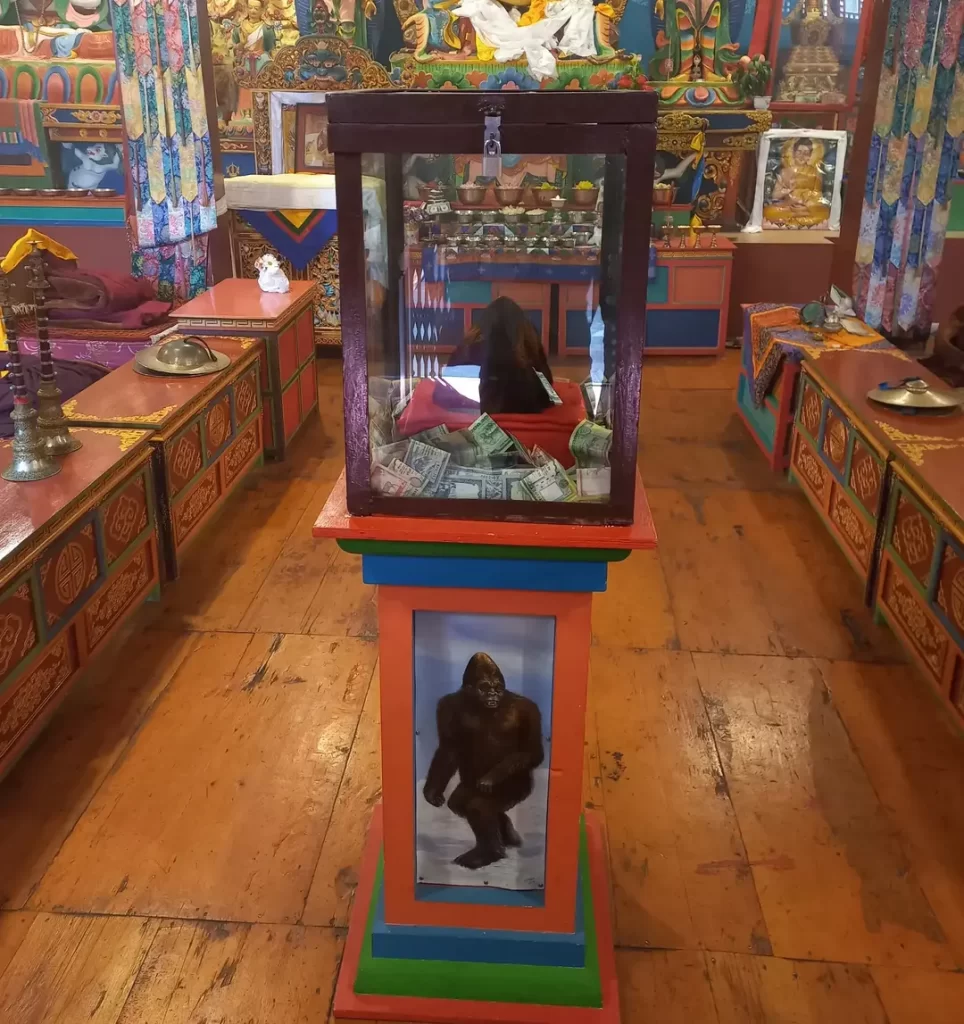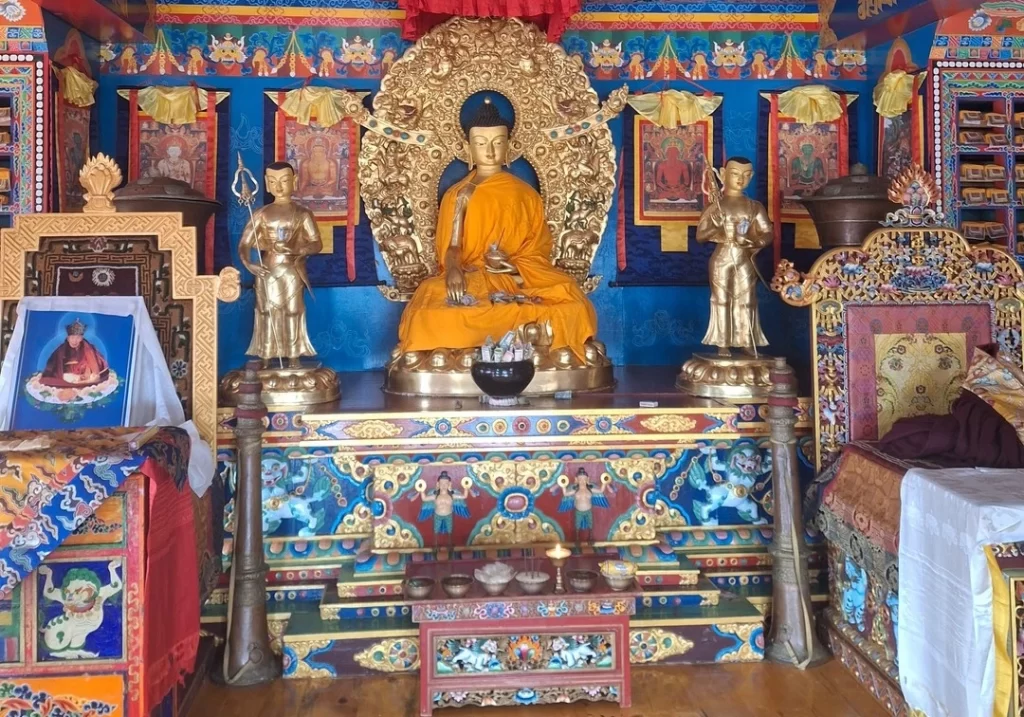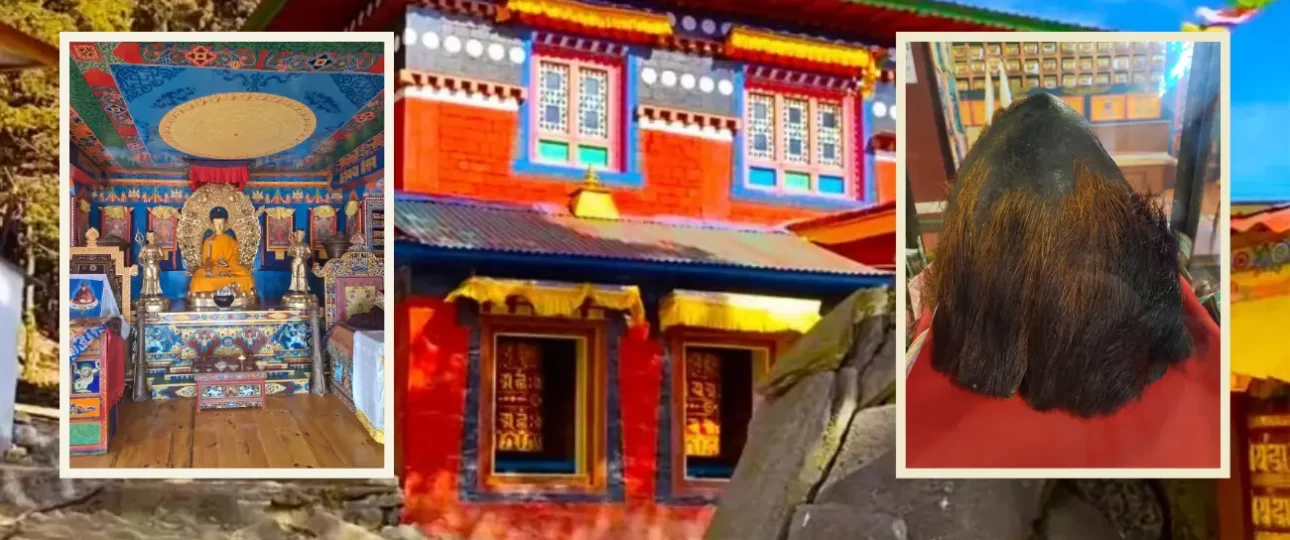Khumjung Monastery
The Khumjung Monastery, also known as Khumjung Gompa, is a revered religious site located in Khumjung Village within the Khumbu region of Nepal. This monastery is well-known among visitors, both for its spiritual significance and for housing an unusual relic believed by locals to be a scalp of the legendary Yeti. The relic is preserved in a glass case inside the monastery, drawing curious trekkers and mountaineers who visit Khumjung on their journey through the Everest region.
The monastery itself is a tranquil place where Sherpa traditions and Tibetan Buddhism are deeply respected and celebrated. Decorated with vibrant Buddhist murals, prayer flags, and statues, it serves as a gathering place for worship, meditation, and important Sherpa ceremonies. Monks and residents of Khumjung visit regularly, adding to the spiritual ambiance. The monastery is also significant in preserving the spiritual and cultural practices that are integral to Sherpa identity, offering a meaningful experience for travelers interested in the Himalayan way of life.
The Yeti scalp adds a layer of mystery to the monastery and is a reminder of the folklore that permeates the Himalayas, where tales of the elusive Yeti have been part of local storytelling for generations. This relic makes the Khumjung Monastery particularly unique, making it a key highlight for those visiting the Everest region.
Historical Background of Khumjung Monastery
The origins of Khumjung Monastery date back centuries, with roots tracing to the early migration of Sherpas from Tibet to Nepal’s Khumbu region. The monastery was founded by Sherpa ancestors who brought their Tibetan Buddhist beliefs with them, and over time, it evolved into an important spiritual hub for the community. Through centuries, it has served as a place of prayer, meditation, and community gatherings, fostering the Buddhist teachings that guide the Sherpa people’s lives.
In the mid-20th century, the monastery became more widely known due to increased trekking activities in the Everest region. The presence of famous mountaineers, including Sir Edmund Hillary, brought international attention to Khumjung and surrounding villages, making the monastery a point of interest for adventurous travelers. Hillary’s work to build infrastructure, including schools and hospitals, also contributed to Khumjung’s development, with the monastery remaining a central spiritual anchor.
The Mysterious Yeti Scalp
Khumjung Monastery is perhaps most famous among tourists for housing what many believe to be the scalp of the Yeti. Known as the “abominable snowman” in Western cultures, the Yeti is a mythical creature that has long been part of Himalayan folklore. Local stories describe the Yeti as a large, ape-like being that roams the high mountains, avoiding human contact but occasionally leaving signs of its existence in footprints and sightings.
The monastery’s supposed Yeti scalp is a relic that has attracted curious travelers and researchers alike. Kept under a glass case, the scalp has sparked numerous debates and scientific investigations over the years. Although some researchers have concluded it to be from an animal, others believe it to be genuine, keeping the legend alive. The scalp’s presence in Khumjung Monastery enhances its mystical allure, making it a must-see for trekkers and believers in the unknown.

Architectural and Artistic Elements
Khumjung Monastery’s architecture is a fine example of traditional Tibetan Buddhist design. The structure is adorned with intricate carvings, colorful murals, and symbolic decor that reflects the deep spirituality of the Sherpa people. Inside, visitors will find statues of various Buddhist deities, along with thangkas (Buddhist paintings) that depict important teachings and spiritual figures.
The walls of the monastery are painted with scenes from Buddhist mythology and include inscriptions of ancient texts that reflect wisdom and guidance for the spiritual journey. Prayer flags in vibrant colors surround the monastery grounds, each representing a prayer sent to the heavens. These architectural and artistic elements add to the tranquil ambiance, making the monastery a place of aesthetic beauty and spiritual solace.
Khumjung Monastery is more than a religious structure—it is a vital part of the Sherpa community’s cultural identity. The monastery holds regular ceremonies, including pujas (prayer rituals), to bless the community, livestock, and trekkers heading to Mount Everest. During these rituals, the monks chant prayers, light butter lamps, and burn incense, creating a peaceful and spiritually charged environment.
The teachings of Buddhism play a central role in the daily lives of the Sherpas. At Khumjung Monastery, spiritual teachings focus on compassion, mindfulness, and respect for all living beings. The monks also share teachings about the interconnectedness of all life, which aligns with the Sherpa’s respect for the natural world around them. The monastery thus serves as a center for spiritual learning and a place where locals and visitors can experience the essence of Himalayan Buddhism.

Festivals and Rituals at Khumjung Monastery
Throughout the year, Khumjung Monastery hosts various Sherpa festivals that are both religious and cultural in nature. Two of the most important celebrations are Dumji and Mani Rimdu.
Dumji is a festival that celebrates the birth anniversary of Guru Rinpoche (Padmasambhava), the Buddhist saint credited with bringing Buddhism to the Himalayas. This festival includes prayers, dances, and community gatherings where people come together to reinforce their bonds and share blessings.
Mani Rimdu, one of the biggest festivals in the Everest region, involves a series of sacred rituals and dances performed by monks wearing traditional masks. This festival symbolizes the triumph of Buddhism over evil forces and is celebrated with much fanfare, attracting locals and tourists alike.
Visitor Experience and Entry to Khumjung Monastery
The monastery welcomes both local devotees and international visitors, including trekkers and mountaineers on their way to Everest Base Camp or other destinations. Upon entering, visitors are asked to remove their shoes as a sign of respect. Many visitors bring small offerings such as butter for lamps or donations to support the monastery’s upkeep.
Guided tours are often available, led by local guides who explain the history, architecture, and significance of the relics and artworks. Travelers interested in spiritual experiences can also arrange to participate in pujas or receive blessings from the monks, offering a rare opportunity for a deeper cultural connection.
Khumjung Monastery’s Role in the Community
Beyond its spiritual duties, Khumjung Monastery plays a central role in the social life of Khumjung Village. The monastery functions as a community gathering place, where villagers come together to celebrate, pray, and support one another. The monastery provides spiritual guidance to local families and is integral to cultural education, helping children learn the stories, values, and traditions of their ancestors.
Monks from Khumjung Monastery also take part in social initiatives, sometimes partnering with schools and NGOs to raise awareness about conservation and sustainable tourism. These efforts underscore the Sherpa belief that spiritual health and environmental stewardship go hand in hand, reinforcing the monastery’s role as both a spiritual and social institution.
Conservation Efforts and Sustainable Tourism
Khumjung Monastery is located within Sagarmatha National Park, a UNESCO World Heritage site known for its breathtaking landscapes and efforts to conserve the fragile Himalayan ecosystem. The monastery and local community actively participate in promoting sustainable tourism practices to protect the region’s natural beauty and cultural heritage.
Visitors are encouraged to follow responsible tourism practices, including waste reduction, staying on designated trails, and supporting local businesses. The monastery itself benefits from donations and contributions, which help preserve its structure and relics while supporting community projects that promote eco-friendly practices.
Conclusion
Khumjung Monastery is more than just a religious site; it’s a sanctuary that embodies the essence of Sherpa culture, spirituality, and Himalayan mystery. From the unique Yeti scalp relic to its beautiful murals and tranquil surroundings, Khumjung Monastery offers visitors an unforgettable experience that connects them with the profound traditions of the Himalayas. For those trekking through the Everest region, a visit to this monastery provides a glimpse into the Sherpa way of life, offering both a cultural and spiritual journey that enriches the overall Himalayan adventure.
FAQs
What makes Khumjung Monastery unique?
Khumjung Monastery houses a relic believed to be a Yeti scalp and is deeply connected to Sherpa spirituality, making it a unique blend of cultural and mystical elements.
Can tourists enter Khumjung Monastery?
Yes, tourists are welcome, with many taking guided tours to learn about the monastery’s history, art, and significance.
When are the major festivals at Khumjung Monastery?
The main festivals celebrated here are Dumji, honoring Guru Rinpoche, and Mani Rimdu, symbolizing the triumph of Buddhism over evil forces.
What is the best time to visit Khumjung Monastery?
The best time to visit is during the spring (March-May) and autumn (September-November) when the weather is favorable, and the Mani Rimdu festival takes place.
Is there an entrance fee for Khumjung Monastery?
While no formal fee is required, donations are appreciated to support the monastery’s upkeep and community activities.



